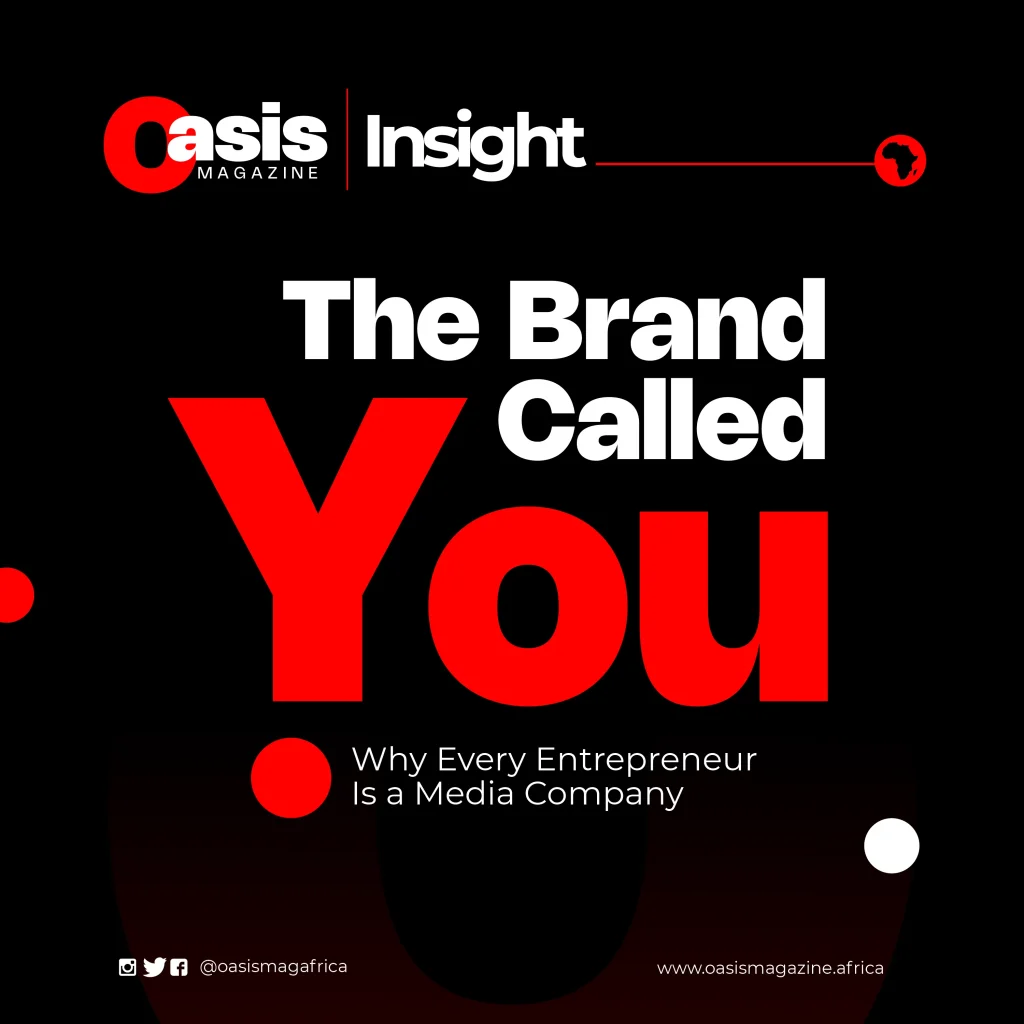Why exclusivity—not abundance—is the ultimate growth lever in emerging markets
Executive Summary: The Paradox of Plenty
In a world saturated with fast fashion, algorithmic content, and mass-produced goods, scarcity has become the new premium. While traditional luxury thrived on heritage and craftsmanship in Europe, a new frontier of luxury is emerging in Africa—where entrepreneurs are harnessing cultural rarity, artisanal integrity, and narrative depth to build globally coveted brands.
Contrary to the assumption that emerging markets chase volume, Africa’s most sophisticated consumers—and creators—are proving that demand for the rare, the meaningful, and the exclusive is universal. From limited-edition Ankara couture to members-only art residencies in Accra, African founders are mastering “premium scarcity”: a business model that leverages intentional limitation to amplify value, loyalty, and margin.
This is not about replicating Paris or Milan. It’s about reclaiming African aesthetics as luxury codes—and proving that the future of global luxury will be written in Lagos, Dakar, and Cape Town.
“Scarcity isn’t about withholding—it’s about honoring. When you limit access, you elevate meaning.”
— Lisa Folawiyo, Founder, Jewel by Lisa
I. The Global Shift: From Mass Appeal to Meaningful Exclusivity
Luxury is no longer defined by logos or price tags. Post-pandemic, global consumers—especially Gen Z and UHNWIs—seek authenticity, story, and singularity. Bain & Company reports that 73% of luxury buyers now prioritize “uniqueness” over brand name, and 68% are willing to pay 30%+ premiums for limited editions.
In this context, Africa holds a structural advantage:
- Cultural heritage that is globally distinctive yet under-commodified
- Artisanal traditions (handwoven kente, Adire dyeing, Tuareg silverwork) that cannot be industrialized
- Narrative richness rooted in identity, resistance, and renaissance
African entrepreneurs are no longer licensing their culture to foreign houses. They are owning the scarcity—and the story behind it.
II. Fashion: Where Heritage Meets High Margin
African designers are turning centuries-old textiles into collectible luxury assets—not by scaling production, but by constraining it.
Case Study: Christie Brown (Ghana)
Ama Biney’s label doesn’t chase retail partnerships. Instead, she releases two seasonal collections of 50–70 pieces each, hand-finished in Accra. Each garment features custom-printed Adinkra symbols with embedded meaning—wearable philosophy, not just fashion.
Result?
- Waitlists of 6+ months
- Resale premiums of 200% on Vestiaire Collective
- Collaborations with LVMH on “cultural integrity” frameworks
Strategy: Scarcity as curation. Every piece is a chapter in a larger cultural narrative.
Case Study: Maxhosa Africa (South Africa)
Laduma Ngxokolo’s knitwear brand draws from Xhosa initiation patterns—traditionally sacred and never commercialized. By limiting annual production to 1,200 units and selling only through flagship boutiques and private appointments, Maxhosa has achieved:
- 85% gross margins
- Inclusion in the permanent collection of the Victoria & Albert Museum
- A waiting list that includes Beyoncé and Naomi Campbell
Strategy: Cultural IP as a finite resource. Once shared, it’s protected—not diluted.
III. Real Estate: The Rise of “Cultural Sanctuaries”
In cities like Lagos and Nairobi, where land is abundant but trusted, design-led spaces are rare, entrepreneurs are creating ultra-exclusive lifestyle ecosystems.
Case Study: Alara Lagos
Founded by stylist and entrepreneur Nkwo Onwuka, Alara isn’t a store—it’s a cultural embassy. Housed in a David Adjaye–designed building, it features:
- Rotating exhibitions of African art
- A private members’ lounge for creatives and collectors
- Limited-run collaborations (e.g., 20 hand-beaded clutches with a Yoruba master artisan)
Alara doesn’t advertise. Access is by invitation or referral only. Yet it’s become a pilgrimage site for global tastemakers—from Dior’s Maria Grazia Chiuri to Solange Knowles.
Strategy: Scarcity of space = scarcity of experience. The building itself is the brand.
Emerging Model: “Art-Backed Residences”
In Cape Town and Marrakech, developers are launching ultra-luxury condos where each unit includes a commissioned artwork by a rising African artist—with NFT certificates of provenance. Only 12 units per building. Prices start at $2.5M.
Why it works: Buyers aren’t just purchasing real estate—they’re acquiring cultural equity.
IV. Art & Collectibles: The New Asset Class
Africa’s contemporary art market grew 21% annually from 2020–2024 (Art Basel & UBS Report), outpacing global averages. But the real innovation lies in engineered scarcity.
Case Study: The Africa Art Editions (AAE)
This Nairobi-based platform partners with artists like Michael Armitage and Njideka Akunyili Crosby to release signed, numbered print editions of just 10–25 copies. Each comes with a digital certificate, studio documentary, and invitation to a private viewing.
- 92% sell out within 48 hours
- Secondary market values rise 40–150% in 12 months
- Collectors include Jay-Z, Oprah, and the Tate Modern
Strategy: Scarcity + storytelling = collectibility. The artwork is the product; the narrative is the multiplier.
V. The Premium Scarcity Playbook for African Founders
Building luxury in emerging markets requires discipline, not just creativity. The most successful adopt these principles:
- Limit to Elevate
Cap production, access, or editions. Scarcity signals value. - Embed Cultural IP
Anchor products in heritage that cannot be copied—only licensed or co-created. - Control the Narrative
Own the story through owned media, private events, and selective partnerships. - Design for Collectibility
Build in resale value via certificates, provenance tracking, and archival quality. - Prioritize Community Over Customers
Cultivate a tribe of believers—not buyers. Scarcity thrives on belonging.
As Senegalese designer Selly Raby Kane puts it: “We’re not selling clothes. We’re inviting people into a world—and not everyone gets a key.”
VI. Why Global Luxury Is Watching Africa
LVMH, Kering, and Richemont are no longer just sourcing African motifs—they’re studying African scarcity models. Why?
- African luxury is born digital, leveraging Instagram and WhatsApp for private sales
- It’s community-native, using trust networks instead of billboards
- It’s ethically defensible, rooted in fair artisan partnerships
In a world fatigued by greenwashing and overproduction, Africa offers authentic exclusivity—not as marketing, but as ethos.
Conclusion: The Future of Luxury Is Finite
The greatest luxury of the 21st century won’t be gold or silk—it will be meaning, access, and time. African entrepreneurs, long accustomed to making more with less, are uniquely positioned to lead this shift.
By treating culture as a finite resource, craftsmanship as sacred, and community as currency, they’re proving that true luxury isn’t about having more—it’s about choosing what to withhold.
And in doing so, they’re not just building brands.
They’re building cultural legacies—one rare piece at a time.
“In a world of infinite scroll, the ultimate luxury is something you can’t refresh.”
Sidebar: The Premium Scarcity Index – 2025
Oasis Intelligence analysis of high-margin African luxury ventures
| Category | Avg. Gross Margin | Production Cap | Resale Premium (12 mo) |
|---|---|---|---|
| Haute Couture | 78% | <100 units/season | +120% |
| Art Editions | 85% | 10–25 copies | +90% |
| Cultural Real Estate | N/A (asset-based) | 8–12 units/building | +35% (vs. comparable) |
| Artisan Accessories | 72% | <500 units/year | +60% |
Note: All featured brands maintain waitlists and reject >60% of wholesale inquiries


